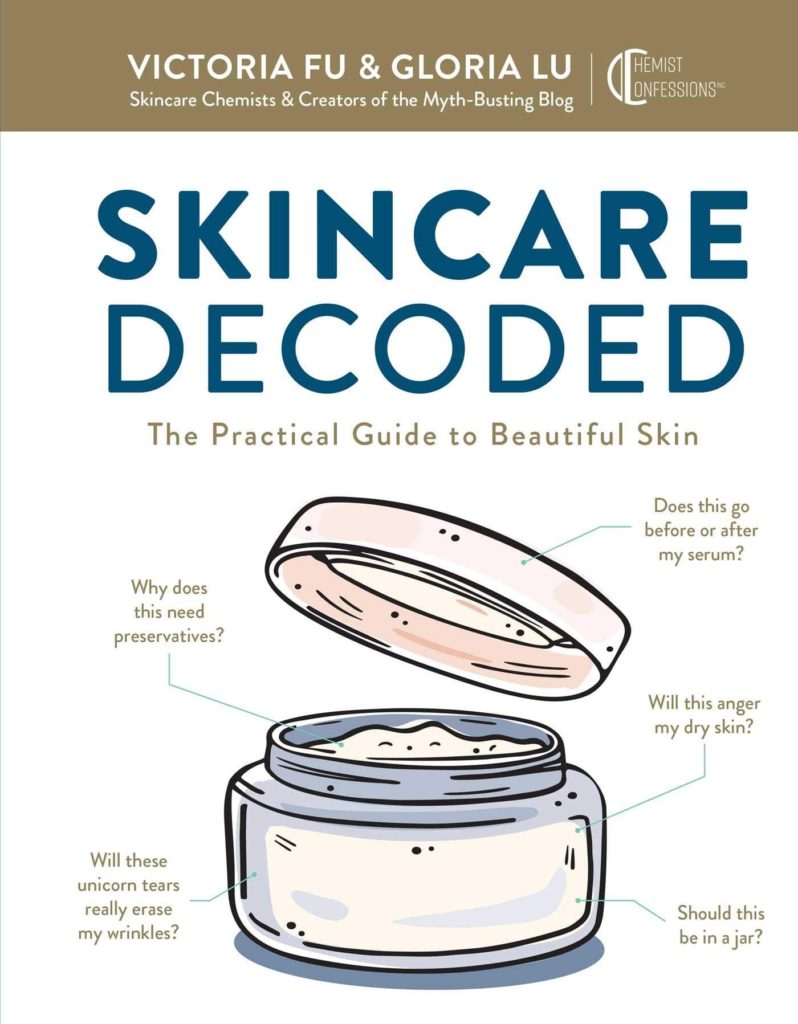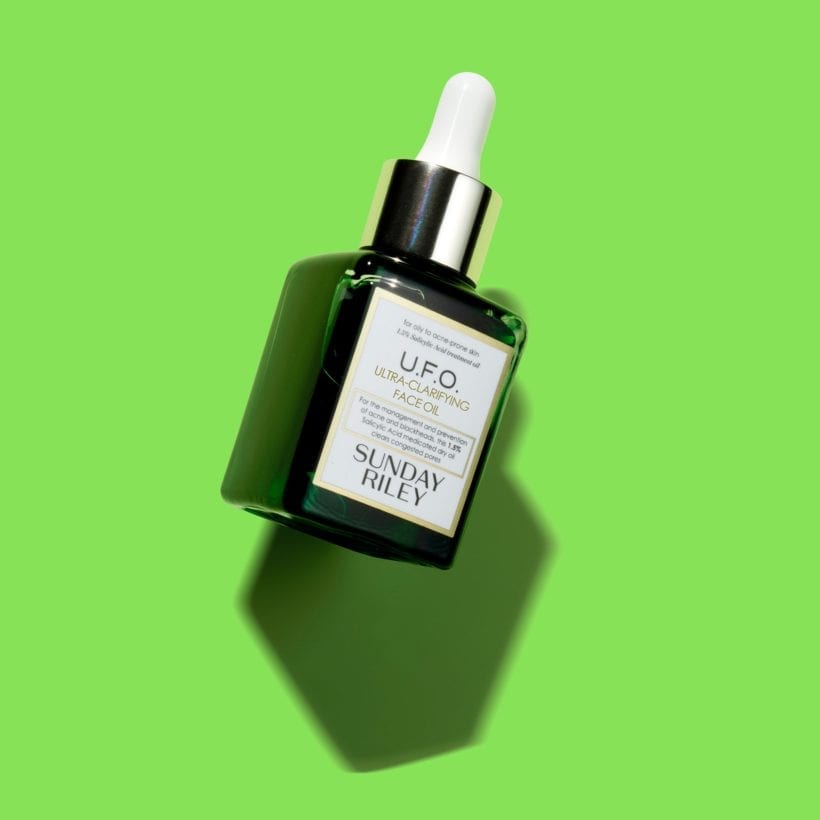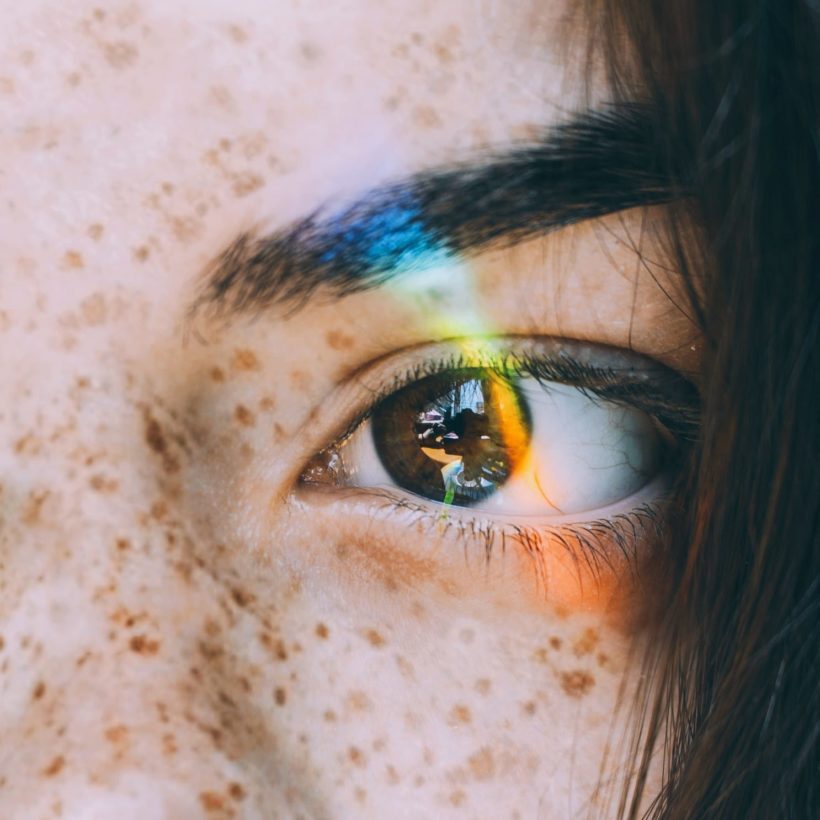“This $1,295 face cream that’ll transform your skin in seconds!”
You’ve heard the same ol’ taglines a hundred times before. There’s a lot of misleading information in the beauty industry, and there are plenty of brands out there that try to sell miracles in a bottle — particularly using fancy marketing jargon and mysterious ingredients that make products sound more effective than they actually are. In fact, a study found that only 18% of claims in beauty commercials are trustworthy.
At Sunday Riley HQ, we only use ingredients that truly have a meaningful impact on your skin, everything we create is backed by science, and we don’t believe in following fads just because everyone on TikTok is trying them. That’s why we’ve been long-time fans of like-minded beauty chemists Victoria Fu and Gloria Lu, the founders behind Chemist Confessions and authors of their new book, Skincare Decoded. The duo, who both studied chemical engineering and landed in the beauty world to pursue their passions, boasts 141K followers on Instagram for breaking down the exact science behind ingredients. They’re basically famous for calling out the bull when it comes to cosmetics. So, when we got the opportunity to pick their brains about their best-kept beauty secrets from their years of intensely studying different ingredients, we knew we were in for the real deal.
Below, here are their top six beauty lessons:
Vitamin C is the second-best anti-aging step (sunscreen is #1)
“Vitamin C is one of the earliest skincare ingredients I got to know really well. I have consistently used it since I first got into the industry in my early 20s. This is an ingredient category we’d recommend doing a quick #decodethatIL [our hashtag for decoding ingredient lists] because it turns out that vitamin C actually represents a whole group of very different molecules. Ascorbic acid is the vitamin C molecule with all the good data on it — think: it smooths out wrinkles, it’s packed with antioxidants, and it evens out pigmentation,” says Lu.
Petrolatum is underrated and misunderstood
“Petrolatum has had a bad reputation due to a lot of fear-mongering [editor’s note: unrefined petroleum in beauty products is banned in Europe] and its sourcing isn’t very glamorous either [since it comes from non-renewable, crude oil]. But the reality is this is a safe and highly effective occlusive ingredient that is a versatile tool in anyone’s skincare arsenal — and an absolute must-have for those with dry skin! Use petrolatum-based balms to spot treat, protect sensitive skin, and seal in moisture. Remember this should be the last step to your skincare routine and only use this on clean skin especially if your skin gets easily congested. This is actually one of my favorite moves for my dry skin. Sometimes I’ll just slather my whole face with it before bed on really dry nights” says Lu. The process of slathering your skin in petrolatum is gaining momentum via slugging.
Over-the-counter adapalene is an acne game changer
Adapalene, which features retinoid-like compounds, “is a relative newcomer to the OTC acne scene. It used to be prescription-only, but now you can find it at any local drugstore. It’s actually the only retinoid you can get in the OTC aisle and has promising data in acne management with less of the traditional side effects that you hear about with tretinoin [like stinging, scaling, or redness of skin],” says Fu. In five studies with patients using adapalene for 12 weeks, 0.1% adapalene showed to be as effective as 0.025% tretinoin, but worked faster and demonstrated less irritation than tretinoin.
Face oils are actually only 1/3 of your moisturizer needs
“While face oils are great for boosting your moisturizing game, one of the most common mistakes we see is that people use it as a standalone moisturizer. Oils are actually only one-third of the moisturizing component your skin needs. You also need your water-based molecules — otherwise known as humectants — to keep skin hydrated and the butters/waxes — a.k.a. occlusives — to help seal that moisture in. A solid moisturizer that keeps skin healthy is your personal balance of these three categories. Even for my oily, combination skin, I’ve found oils to be helpful in managing my breakouts and the post-acne healing process,” says Fu.
It’s hard, but try not to jump into too many active ingredients at once

“Some brands have given us a ‘candy shop’ mentality when it comes to skincare actives. While we definitely get the excitement to give your skin all sorts of good stuff, it’s really easy to accidentally overwhelm skin with all of these new ingredients. Without pouring over the internet trying to memorize skincare active layering guides, just remember to introduce active ingredients patiently. Ideally, you introduce them one at a time to really understand how your skin responds to it,” says Lu.
Consistency is key to getting results
“A basic and consistent routine is a lot more powerful than trying to use a lot of products every once in a while. Even on lazy days, if you keep up with your cleanser, moisturizer, and sun protection, it’ll still go really far in the long run,” says Fu.
We only recommend products we have independently researched, tested, and loved. If you purchase a product found through our links, Sunday Edit may earn an affiliate commission.










